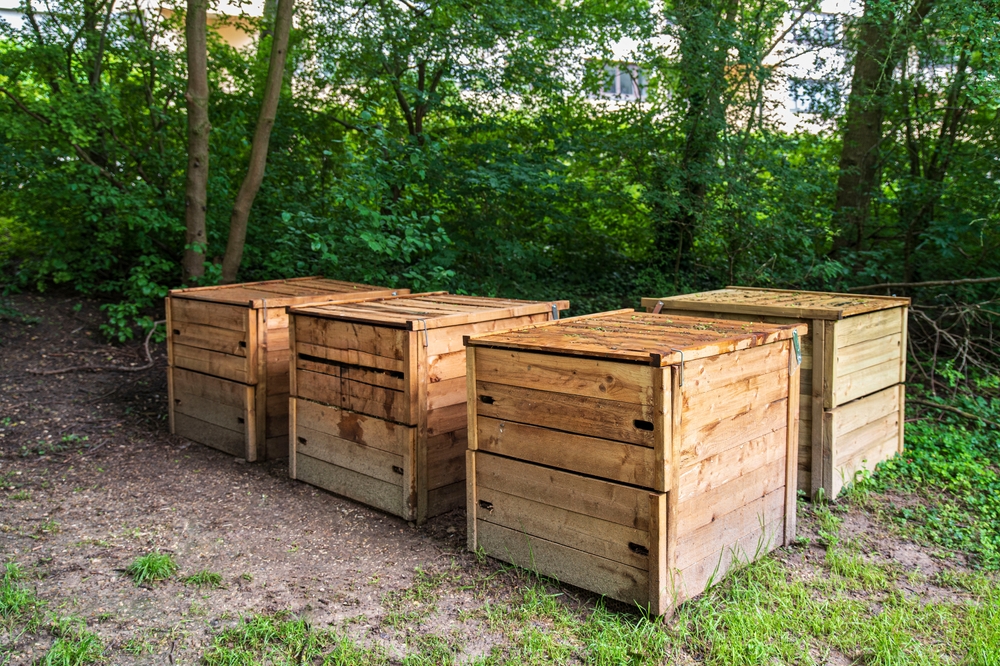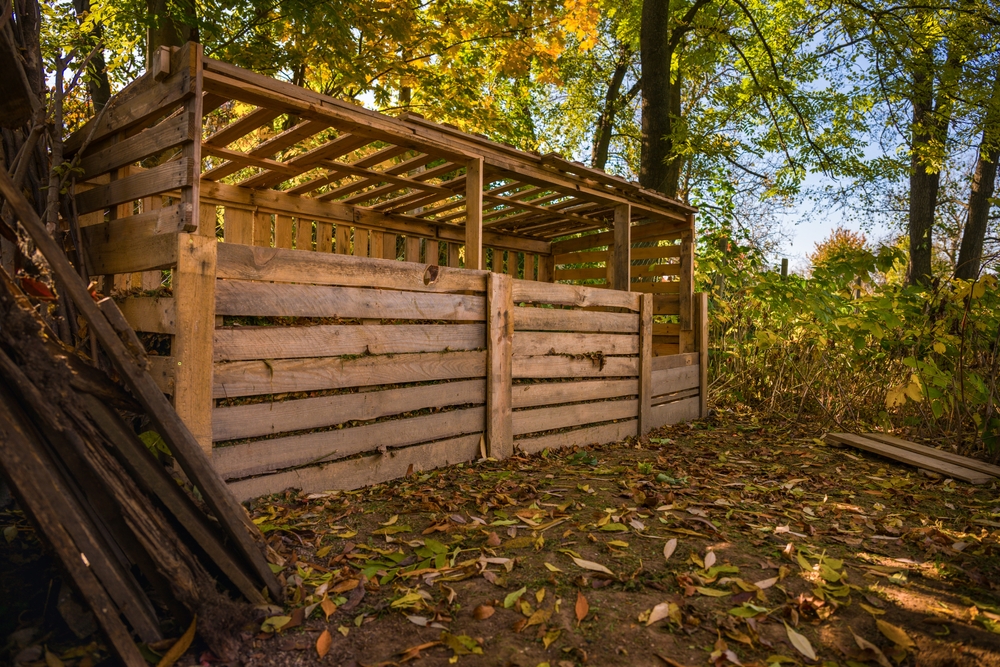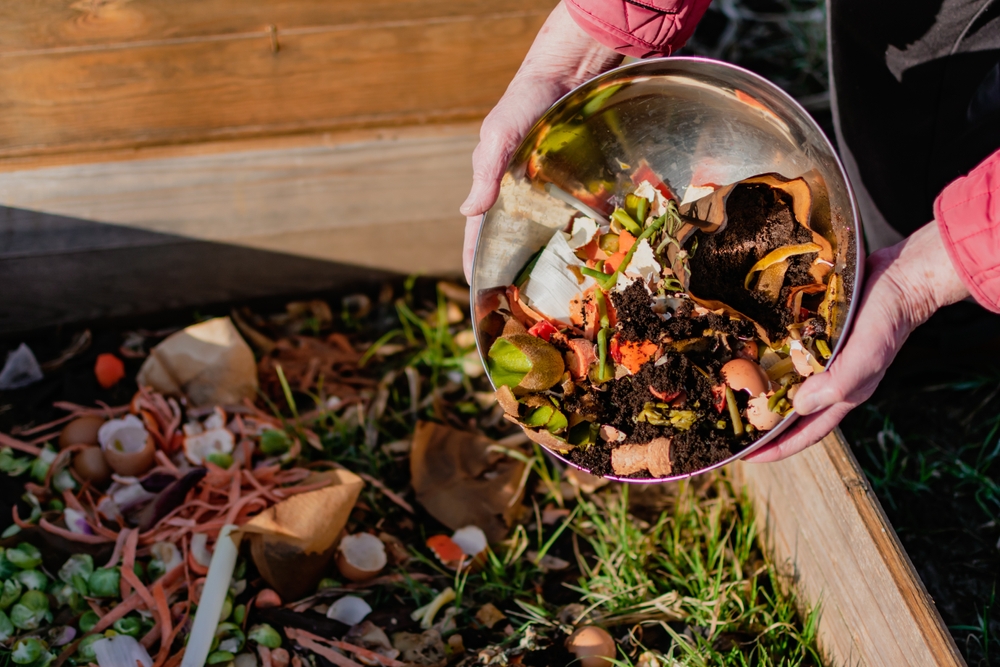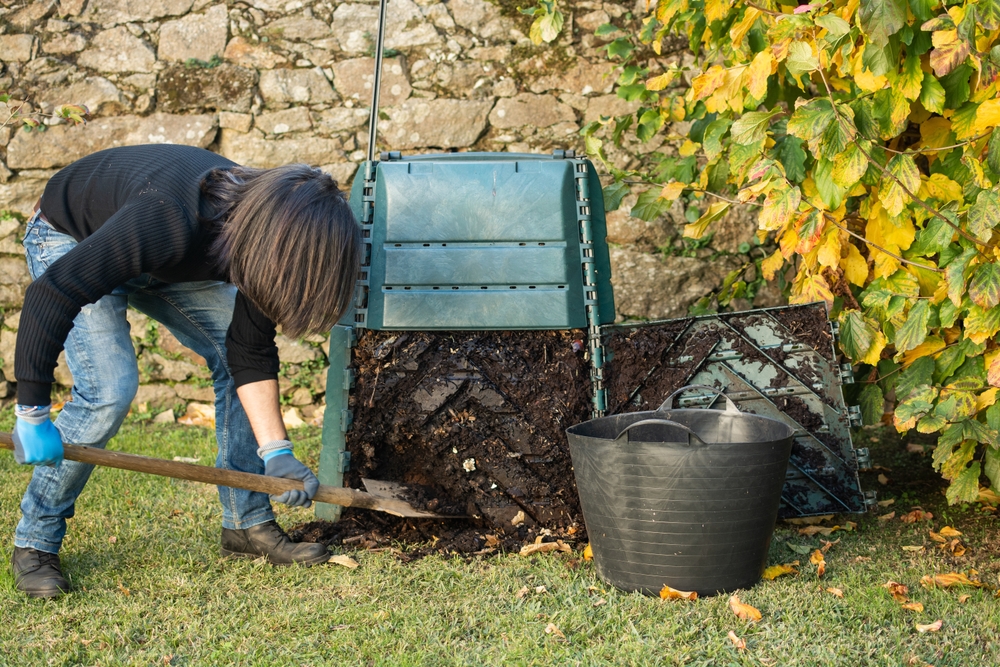How to Create a Compost Bin and Use Compost in Your Garden
Got some leftover materials from your yard or kitchen? It’s time to turn them into something that will help your garden! Instead of throwing out food scraps or fallen leaves, you can turn them into compost that will help your plants grow.
Having a compost bin is a win-win situation. You’re keeping garbage out of your trash bin while creating something that helps your soil. I’ll walk you through the steps of building a compost bin as well as a few tips to maintain and use it in your garden.
This post may contain affiliate links, which helps keep this content free. Please read our disclosure for more info.
Choosing the Right Compost Bin Setup

There is more than one way of setting up a compost bin, and it mostly depends on the space you have and if you want to be hands-on all the time. Check out these options and think about what’s best for your situation.
- DIY bins made from pallets, trash cans, or wire mesh
- Tumbling composters that make turning the pile easier
- Stationary bins that just sit in one spot and do their thing
- Worm bins, if you want to compost indoors or work with less waste
When choosing a compost setup, also think about how much space you can work on, the amount of waste coming from your household, and the weather in your area.
How to Build a Simple DIY Compost Bin

You don’t need much to get started. Old wooden pallets are a solid choice for building a three-sided bin. A plastic storage bin or a garbage can with holes drilled into the sides and bottom works well, too. You can also use wire mesh held in place with garden stakes to create a round or square bin.
- Start by picking a spot that gets some shade and drains well
- When using a closed container, drill holes on the sides to promote air flow.
- For pallets and wire mesh, you can create a lid so you can toss the waste and turn the pile more easily.
- Leave some space around it so you can mix things up with a pitchfork or shovel every now and then.
That’s really all you need to kick things off. Your goal here is to keep things simple and workable, and you don’t need to make it fancy.
What to Put in Your Compost Bin

For your compost bin to work, you need to mix greens and browns. You need to have some balance between the two so that your compost pile will break down without a problem.
Greens (Nitrogen-rich):
- Fruit and vegetable scraps
- Coffee grounds and filters
- Grass clippings
- Tea bags (check for plastic)
Browns (Carbon-rich):
- Dry leaves
- Shredded newspaper
- Straw or hay
- Cardboard (non-glossy)
Avoid adding meat, greasy stuff, dairy, sick plants, and pet poop. These usually attract pests, and they can mess up your whole setup. Stick to the greens and browns, and your compost pile will stay healthy.
How to Maintain Your Compost Pile

Maintaining a healthy compost pile needs your attention, but you don’t need to check it every day. Turn the pile every week or two with your shovel to let the air inside.
Aim for a mix of about two to three parts browns for every one part green. If your pile smells weird, you might need more browns. If it looks dry or isn’t doing much, sprinkle it with water.
How to Know When Your Compost Is Ready

Finished compost looks like crumbly dirt and should smell like soil. When you can’t see food scraps or big chunks, let it finish for at least a month. After that, you can screen your compost to filter out materials that didn’t break down and use it in your garden.
If you maintain your compost pile properly, it will finish in a couple of months. If you left it unattended or didn’t pay much attention to it, it can take a year before it decomposes.
How to Use Compost in Your Garden

Once your compost is ready, you can go ahead and use it in your yard or garden. There are a couple of ways to use it, and here are a few examples.
- Mix into garden soil before planting
- Use as a top dressing for existing plants
- Add to container plants or raised beds
If you want to feed your plants with compost tea, just steep some compost in water for a few days, then strain it and pour it at the base of your plants.
Composting is a simple habit that helps your garden grow better while cutting back on waste. It doesn’t take much to get started, and once you see how well your plants respond, you’ll be glad you gave it a try.
Start small, keep adding to your pile, and let nature do the work. Every time you add kitchen scraps or rake up leaves, you’re feeding the soil that feeds your plants. That’s what keeps the garden going strong, season after season.
This article originally appeared on Avocadu.
